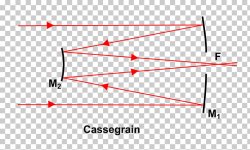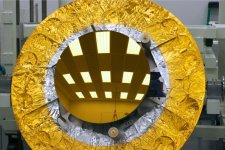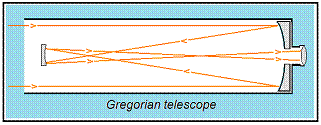Yes I remember your post now. That’s got to impress you no matter what your credentials are. That I will look forward to.
Wow. So how compromised is this system due to atmospheric influences compared to the JWST over all? Or will it visually outperform it?
I can answer this in terms that even a child of ten can understand! 🙂
Ground based telescopes previously suffered from huge atmospheric disturbance. This is why stars twinkle but larger planets don't.
How is this vast improvement done?
It's down to the secondary mirror adapting every thousandth of a second for atmospheric aberration:
FWIW, a third (tertiary) mirror is employed to correct further aberrations in reflectors. In refractors you need 5 lenses. Because you must factor chromatic aberration.
Here's the current state of play with the World's Telescopes.
IMO. adaptive optics are a huge breakthrough, only possible with computing power.
For the more serious student, I have found a chink in the Mathematics of these things. Both Gaussian apertures and half-wave dipoles veer slightly from the exact values you might expect.
https://en.wikipedia.org/wiki/Fraunhofer_diffraction
https://en.wikipedia.org/wiki/Dipole_antenna
Only about 10%, but significant. Am working on it.
If the universe is expanding more rapidly, is it expanding at the same rate everywhere?
Are there older further from us parts that have been accelerating longer, and therefore faster?
What happens when the matter approaches or reaches lightspeed?
Is it all translated into photons, at least the parts we can see?
No one can see the dark matter, maybe it's already there.
Are there older further from us parts that have been accelerating longer, and therefore faster?
What happens when the matter approaches or reaches lightspeed?
Is it all translated into photons, at least the parts we can see?
No one can see the dark matter, maybe it's already there.
So many questions all at once, MITsound - my you are greedy! 😀
1. One of the fundamental tenets of cosmology is that the universe is isotropic, meaning it looks the same in all directions. In consequence, the space between galactic clusters is thought to expand at the same rate everywhere. This assumption is something that astrophysicists are keen to test and there are some observational results which appear to suggest that the universe is moving away from us faster in some directions than others. Some cosmologists believe there must be large unseen and unknown structures in the universe that are responsible for causing deviations from the Hubble flow, the expansion that increases the distances between galactic clusters steadily with time.
2. Because the "fabric" of the universe is "stretchy", the objects on the fabric close to you would appear to move away with a certain speed, but the farther objects would appear to move faster. Even though the the fabric of the universe is being "pulled apart" at a constant speed, the apparent stretch changes with distance.
3. Matter can approach light speed, but can never actually reach it. Matter remains matter, but becomes more massive as it approaches light speed.
4. See above.
5. Dark Matter is real and present in the universe according to the current Standard Model of Big Bang / dark matter / dark energy cosmology.
1. One of the fundamental tenets of cosmology is that the universe is isotropic, meaning it looks the same in all directions. In consequence, the space between galactic clusters is thought to expand at the same rate everywhere. This assumption is something that astrophysicists are keen to test and there are some observational results which appear to suggest that the universe is moving away from us faster in some directions than others. Some cosmologists believe there must be large unseen and unknown structures in the universe that are responsible for causing deviations from the Hubble flow, the expansion that increases the distances between galactic clusters steadily with time.
2. Because the "fabric" of the universe is "stretchy", the objects on the fabric close to you would appear to move away with a certain speed, but the farther objects would appear to move faster. Even though the the fabric of the universe is being "pulled apart" at a constant speed, the apparent stretch changes with distance.
3. Matter can approach light speed, but can never actually reach it. Matter remains matter, but becomes more massive as it approaches light speed.
4. See above.
5. Dark Matter is real and present in the universe according to the current Standard Model of Big Bang / dark matter / dark energy cosmology.
No I helped to correct you false assumption - remember?To be a great Mathematician or Physicist takes a lot of ego. 😀
I have solved the question of diffraction spikes in hexagonal telescopes like the, and I must be frank here, hopeless JWST.
... snip
Are you great?
//
FWIW, a third (tertiary) mirror is employed to correct further aberrations in reflectors.
Yes, Steve, and there is likely a fourth mirror as in the JWST (see below). It all amounts to a veritable fairground "Hall of Mirrors"!
The GMT and the JWST are both Cassegrain reflectors. The light is gathered by the primary mirror and directed towards the secondary mirror where it is then reflected back towards a focal point which lies behind and through the centre of the primary mirror.
The Webb's tertiary mirror sits at this focal point and directs the light to a flat "fine steering mirror", where it is then reflected into the science instruments that are located in a box attached to the back of the primary mirror.
It's all a long way away in time and space from my boyhood Charles Frank refracting telescope. Its lenses were contained in black cardboard tubes which I just had to paint white - cos astronomical telescopes are always white - right? 😎
P.S. According to NASA:
"Webb is what is known as a three mirror anastigmat telescope. In this configuration, the primary mirror is concave, the secondary is convex, and it works slightly off-axis. The tertiary removes the resulting astigmatism and also flattens the focal plane. This also allows for a wider field of view."
https://jwst.nasa.gov/content/obser...a three,also allows for a wider field of view.
Attachments
Here’s a nice site with an overview of the coming Extremely Large Telescopes. Looks like the big daddy will be the ESO’s ELT at 39m
https://www.universetoday.com/133648/rise-super-telescopes-giant-magellan-telescope/
https://www.universetoday.com/133648/rise-super-telescopes-giant-magellan-telescope/
TNT, you are like a dog that won't let go of a bone! Shame on you. I have known exactly how the JWST diffraction works all along. It is the GMT that made me think and research.
Very good video, Bonsai. It is interesting that we think that the expansion of the Universe started about 5Bn years ago when expansive dark energy grew stronger than dark matter influence in most parts of the Universe. Except in our local Virgo cluster of galaxies where we have lots of mass holding it together. There is evidence that some local globular clusters around our Milky Way Galaxy have very little datk matter.
FWIW, the GMT is a segmented concave secondary Gregorian telescope. Am unsure about the JWST which has a single circular secondary. A Cassegrain has a convex hyperbolic secondary mirror. A Newtonian, a flat secondary that images sideways.
My local charity shop has a 70mm refractor for sale with a good tripod and the bigger standard 1.25" eyepieces. £40. Seems good. Has star maps too.
Very good video, Bonsai. It is interesting that we think that the expansion of the Universe started about 5Bn years ago when expansive dark energy grew stronger than dark matter influence in most parts of the Universe. Except in our local Virgo cluster of galaxies where we have lots of mass holding it together. There is evidence that some local globular clusters around our Milky Way Galaxy have very little datk matter.
FWIW, the GMT is a segmented concave secondary Gregorian telescope. Am unsure about the JWST which has a single circular secondary. A Cassegrain has a convex hyperbolic secondary mirror. A Newtonian, a flat secondary that images sideways.
My local charity shop has a 70mm refractor for sale with a good tripod and the bigger standard 1.25" eyepieces. £40. Seems good. Has star maps too.
Last edited:
Is this "mass" simply kinetic energy mv2?3. Matter can approach light speed, but can never actually reach it. Matter remains matter, but becomes more massive as it approaches light speed.
Yes, energy has a mass equivalence according to Einstein's famous equation E = mc^2.
https://energyeducation.ca/encyclopedia/Mass-energy_equivalence
https://energyeducation.ca/encyclopedia/Mass-energy_equivalence
FWIW, the GMT is a segmented concave secondary Gregorian telescope. Am unsure about the JWST which has a single circular secondary.
The JWST is outside the Earth's atmosphere where the advanced secondary mirror technology of the GMT is not required.
FWIW, the GMT is a segmented concave secondary Gregorian telescope. Am unsure about the JWST which has a single circular secondary. A Cassegrain has a convex hyperbolic secondary mirror.
The JWST secondary mirror is convex as per a Cassegrain reflector (see attachment).
I read that the seven matching secondary mirror segments of the GMT form a 3.2 m concave surface, which would be in accord with a Gregorian telescope as you say.
Attachments
Last edited:
I think we in Concord that the JWST is a Cassegrain.

https://webb.nasa.gov/content/observatory/ote/mirrors/index.html
The convex secondary is extending the Focal Length whilst maintaining compactness.
A matter I consider important for precise Mathematical Accuracy.
https://webb.nasa.gov/content/observatory/ote/mirrors/index.html
The convex secondary is extending the Focal Length whilst maintaining compactness.
A matter I consider important for precise Mathematical Accuracy.
Is it possible for you to be a bit more coherent?I think we in Concord that the JWST is a Cassegrain.
just askin
I'll wager you don't even know how funny you are.He's sentences are as weird as yours at time ,🙂
Concord USA?
Woff!
//
If you edit this you're a coward! 🙂
Is it possible for you to be a bit more coherent?
just askin
Pot, kettle, black.
Just sayin' 😉
Woff!
Woff : When a nasty smell blankets an entire area. (Urban Dictionary)
WTF!!!! 😉
I think we in Concord that the JWST is a Cassegrain.
To be in concord: To be in a state of agreement.
Look it up you non-English speakers! 😛
And drop those inappropriate capital letters, Steve!
Proof? Don't mean to be over your head, it's just incidental.Pot, kettle, black.
Just sayin' 😉
Who am I to judge?
- Status
- Not open for further replies.
- Home
- Member Areas
- The Lounge
- What is the Universe expanding into..



